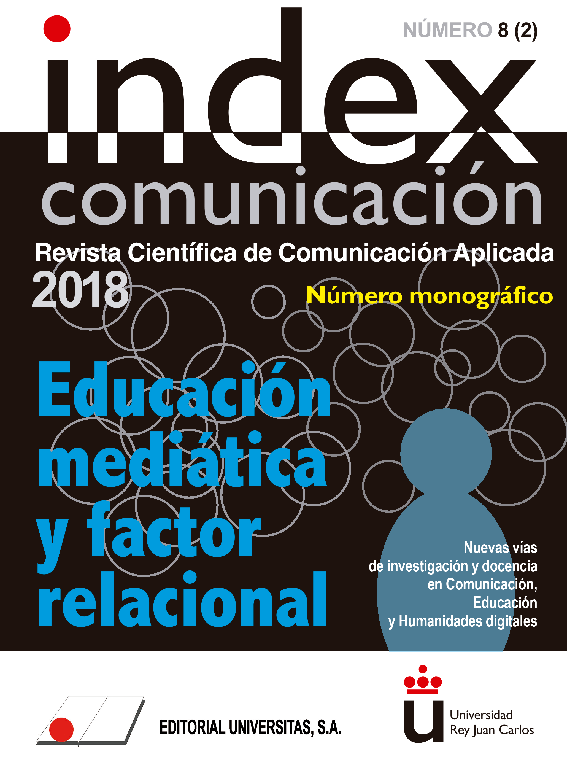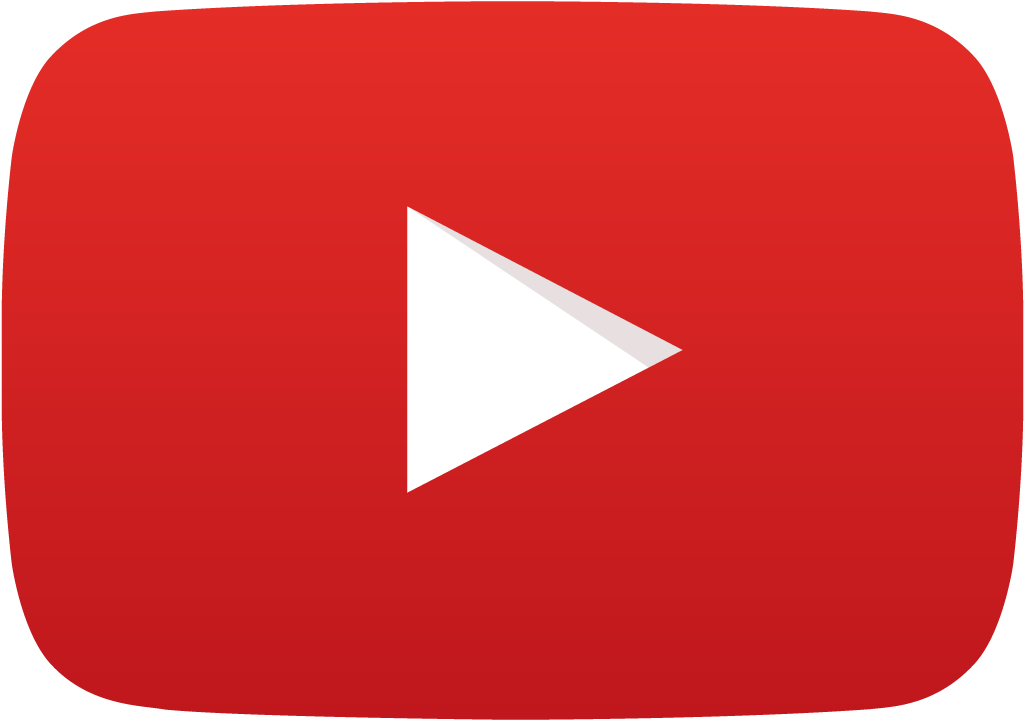Educación mediática «aumentada» para la interacción y participación en entornos virtuales. Análisis de una comunidad de Pokémon Go en YouTube
Palabras clave:
educación mediática, comunidades virtuales, cultura popular, Pokémon Go, YouTubeResumen
Partiendo de las numerosas manifestaciones de la cultura popular digital, las comunidades virtuales que generan y su potencial como agentes de educación informal, en este trabajo pretendemos definir el tipo de relaciones e interacciones predominantes en la comunidad que se ha creado en torno a Pokémon Go, y lo hacemos centrándonos en el entorno de unas de sus cabezas más visibles: el youtuber Gangsta. Se analizan sus ocho vídeos más vistos y las reacciones de los usuarios. Nuestra metodología se basa en la Comunicación mediada por Ordenador, en el Análisis del Discurso Mediado por Ordenador y el enfoque cuantitativo coding & counting. Los resultados constatan el beneficio económico como principal objetivo del youtuber, sin interés por la información veraz, y la falta de participación significativa de los usuarios cuyos comentarios aumentan considerablemente en respuesta a los clickbaits. La enorme cantidad y escasa calidad de interacciones de los ciudadanos en Internet exige una educación mediática «aumentada», abarcando mundos reales y virtuales, una educación mediática que contribuye a la mejora de la sociedad, a un mundo más justo.
Métricas
Citas
Aparici, R. y García-Marín, D. (2018). Prosumidores y emirecs: Análisis de dos teorías enfrentadas. Comunicar, 55, 71-79. Recuperado de https://goo.gl/uXD4Rh
Bauman, Z. (2015). Ceguera moral: la pérdida de sensibilidad en la modernidad líquida. Barcelona: Paidós Ibérica.
Berzosa, M. (2017). Youtuber y otras especies: El fenómeno que ha cambiado la manera de entender los contenidos audiovisuales. Barcelona: Ariel.
Black, R. W. (2008). Adolescents and online fan fiction. New York: Peter Lang Publishing Inc.
Black, R. W. (2009). Online fan fiction and critical media literacy. Journal of Computing in Teacher Education, 26(2), 75-80.
Boyd, D. (2014). It's complicated: The social lives of networked teens. New Haven: Yale University Press.
Burgess, J. & Green, J. (2013). YouTube: Online Video and Participatory Culture. Cambridge: Polity Press
Carpentier, N., Dahlgren, P., & Pasquali, F. (2014). The democratic (media) revolution: A parallel history of political and media participation. In N. Carpentier, K. Schrøder, & L. Hallett (Eds.): Audience transformations: Shifting audience positions in late modernity (pp. 123–141). London: Routledge.
Carr, N.G. (2011). Superficiales: ¿Qué está haciendo Internet con nuestras mentes? Barcelona: Taurus.
Chen, Y., Conroy, N. J., & Rubin, V. L. (2015). Misleading online content: Recognizing clickbait as false news. In M. Abouelenien, M. Burzo, Mihalcea, R. & Pérez-Rosas, V. (Eds.): Proceedings of the 2015 ACM on Workshop on Multimodal Deception Detection (pp. 15-19). New York: ACM.
DEFY Media. (2015). Acumen report: Constant content. Recuperado de https://goo.gl/jREcRx.
Digital Stat. (2016). Hot game: Amazing Pokémon Go statistics. Recuperado de https://goo.gl/5hDCq1
eMarketer (2018, 12 de febrero). Facebook Losing Younger Users. Recuperado de https://goo.gl/jPZFGy
European Union (2018). A multi-dimensional approach to disinformation. Report of the independent High level Group on fake news and online disinformation. Luxembourg: Publications Office of the European Union. Recuperado de https://goo.gl/7ATzey
Fiske, J. (1992). The cultural economy of fandom. In L.A. Lewis (Ed.): The adoring audience: Fan Culture and Popular Media (pp. 30- 49). New York: Routledge.
Gee, J. P. (2004). Lo que nos enseñan los videojuegos sobre el aprendizaje y el alfabetismo. Málaga: Aljibe.
Grubb, J. (19 de julio de 2016). Sensor Tower: Pokémon Go has already passed 30M downloads and $35M in revenue. VentureBeat. Recuperado de https://goo.gl/VY7ZBs
Gutiérrez-Martín, A., y Torrego-González, A. (2018). The Twitter games: media education, popular culture and multiscreen viewing in virtual concourses. Information, Communication & Society, 21(3), 434-447.
Han, B.C. (2014). En el enjambre. Barcelona: Herder Editorial.
Hellekson, K., & Busse, K. (2006). Fan fiction and fan communities in the age of the Internet: new essays. North Carolina: McFarland.
Herring, S. (2004). Computer-Mediated Discourse Analysis: An Approach to Researching Online Behavior. In S.A. Barab, R. Kling y J. H. Gray (Eds.): Designing for Virtual Communities in the Service of Learning (pp. 338-376). New York: Cambridge University Press.
Jenkins, H. (2008). Convergence Culture: La cultura de la convergencia de los medios de comunicación. Barcelona: Paidós.
Jenkins, H. (2009). Fans, blogueros y videojuegos: la cultura de la colaboración. Barcelona: Paidós.
Karlsen, R., Borrás-Morell, J., & Traver-Salcedo, V. (2017). Are trustworthy health videos reachable on YouTube? - A study of YouTube ranking of diabetes health videos. In E.L. Van den Broek, A. Fred, H. Gamboa & M. Vaz (Eds.): Proceedings of the 10th International Joint Conference on Biomedical Engineering Systems and Technologies (17-25). Porto: Scitepress.
Khamis, S., Ang, L., & Welling, R. (2017). Self-branding,‘micro-celebrity’and the rise of Social Media Influencers. Celebrity Studies, 8(2), 191-208.
Lévy, P. (1997). A inteligência colectiva. Para uma antropologia do ciberespaço. Lisboa: Instituto Piaget.
Markham, A. y Buchanan, E. (2015). Ethical Concerns in Internet Research. In J. Wright, (Ed.): The International Encyclopedia of Social and Behavioral Sciences (pp. 606- 613). Amsterdam: Elsevier Press.
Mihaidilis, P. (2014). Media Literacy and the Emerging Citizen: Youth, Engagement and Participation in Digital Culture. New York: Peter Lang Publishing Inc.
Molina, P. (10 de julio de 2013). ¿Por qué Chomsky desconfía de Internet? BBC. Recuperado de https://goo.gl/X5WeUm
Morduchowicz, R. (2015). Adolescentes: cómo construyen su identidad en las redes sociales. In V. Tomé, E. Bévort, & V. Reia-Baptista (Eds.): Research on Social Media: A Glocal View. Lisboa: RV Editores.
Niantic (2017, 7 de abril). Thank you. Recuperado de https://goo.gl/iXbmJe
Pérez-Torres, V., Pastor-Ruiz, Y. & Abarrou-Ben-Boubaker, S. (2018). Youtuber videos and the construction of adolescent identity. Comunicar, 55, 61-70. Recuperado de https://goo.gl/76Pw9C
Quandt, T., & Kröger, S. (Eds.). (2013). Multiplayer: The social aspects of digital gaming. New York: Routledge.
Ramos-Serrano M., & Herrero-Diz P. (2016). Unboxing and brands: Youtuber phenomenon through the case study of EvanTubeHD. Prisma Social, 1, 90-120.
Rodríguez-Serrano, A., Martín-Núñez, M., y Gil-Soldevila, S. (2017). Diseño ludológico y realidad aumentada. La experiencia de juego en Pokémon Go! (Niantic, 2016). Revista Latina de Comunicación Social, 72, 667-678.
Santos-Gómez, M. (2006). Participación, democracia y educación: cultura escolar y cultura popular. Revista de educación, 339, 883-901.
Scolari, C. A. (2013). Narrativas Transmedia. Cuando todos los medios cuentan. Bilbao: Deusto.
Sunstein, C. R. (2014). On rumors: How falsehoods spread, why we believe them, and what can be done. Princeton University Press.
Syed-Abdul, S., Fernandez-Luque, L., Jian, W.S., Li, Y.C., Crain, S., & Liou, D.M. (2013). Misleading health-related information promoted through video-based social media: Anorexia on YouTube. Journal of Medical Internet Research, 15(2). Recuperado de https://goo.gl/13trFe
Thevenin, B. (2017). Remix Politics. In B.S. De Abreu, Mihailidis, P., Lee, A. Melki, J & McDougall, J. (Eds.): International Handbook of Media Literacy Education (174-192). New York: Routledge.
Torrego, A. y Gutiérrez, A. (2016). Ver y tuitear: reacciones de los jóvenes ante la representación mediática de la resistencia. Comunicar, 47, 9-17. Recuperado de https://goo.gl/iXyyzN
Vaterlaus, J. M., Barnett, K., Roche, C., & Young, J. A. (2016). “Snapchat is more personal”: An exploratory study on Snapchat behaviors and young adult interpersonal relationships. Computers in Human Behavior, 62, 594-601.
Vosoughi, S., Roy, D., & Aral, S. (2018). The spread of true and false news online. Science, 359(6380), 1146-1151.
Zannettou, S., Chatzis, S., Papadamou, K., & Sirivianos, M. (2018, mayo). The Good, the Bad and the Bait: Detecting and Characterizing Clickbait on YouTube. Paper presented at the meeting of the 1st Deep Learning and Security Workshop, co-located with the 39th IEEE Symposium on Security and Privacy, San Francisco.
Publicado
Cómo citar
Número
Sección
Licencia
Los autores que publican en esta revista están de acuerdo con los siguientes términos:
Los autores conservan los derechos de autor y garantizan a la revista el derecho de ser la primera publicación del trabajo al igual que licenciado bajo una Licencia Creative Commons Atribución-NoComercial 4.0 Internacional que permite a otros compartir el trabajo con un reconocimiento de la autoría del trabajo y la publicación inicial en esta revista, sin finalidad comercial.
Los autores pueden establecer por separado acuerdos adicionales para la distribución no exclusiva de la versión de la obra publicada en la revista (por ejemplo, situarlo en un repositorio institucional o publicarlo en un libro), con un reconocimiento de su publicación inicial en esta revista.
Se permite y se anima a los autores a difundir sus trabajos electrónicamente (por ejemplo, en repositorios institucionales o en su propio sitio web) antes y durante el proceso de envío, ya que puede dar lugar a intercambios productivos, así como a una citación más temprana y mayor de los trabajos publicados (Véase The Effect of Open Access) (en inglés).















